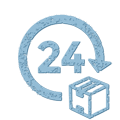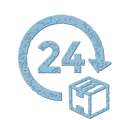There are many uses of Tantalum metal and alloys. Below are details on machining Tantalum including welding, grinding, spinning and more!
Turning and Milling
In lathe operations, cemented carbide tools with high cutting speeds should be used. The tools should be kept sharp and ground with as much positive rake as the tool can withstand. The same rakes and angles used with copper will be satisfactory. A minimum speed of 100 surface feet per minute will work for most Turning operations. Slower speeds will cause the metal to tear. A proper lubricant should be used as a cutting medium and the work must be well flooded at all times. Basically the same procedures should be used when milling drilling taping or threading tantalum. Staggered tooth type milling cutters with substantial back and side relief are recommended. When dies or taps are being used, they should be kept free of chips and kept as clean as possible. When drilling, the point of the drill must be relieved so that it does not rub the material. Threading is best done on a lathe rather than a treading die.
Grinding
Grinding tantalum is extremely difficult. Grinding annealed tantalum is almost impossible. However, cold worked tantalum can be ground with limited success using aluminum oxide Norton 38A-60 wheels or equivalent.
Welding
Because of tantalum’s affinity for gettering, any fusion weld has to be performed in an atmosphere free of contamination. This requires not only the weld puddle, but all to metal must protected. There are four procedures used to maintain protection.
Electron Beam Welding – requires advanced equipment. Most welding is done in a vacuum chamber. Electron Beam Welding produces excellent quality welds which are characterized by narrow weld zones and good penetration. It is useful for intricate, tough to reach weld, particularly fillets and tees of different cross sections.
Flow Purged Chamber – A flow purged chamber should be used when the work is too large to fit any available chamber and the joints are too complex to allow open air welding. The enclosure is made of polyethelene sheet and masking tape. Argon flowing through the bag displaces or mixes the entrapped air to a level where welding can be performed. The argon must be allowed to flow until all of the work is cool. Enclosure of all sides of the work is Mandatory.
Dry Box or Vacuum Purge Chamber – The dry box provides the most superior inert gas atmosphere. The parts are placed in a box. The chamber is sealed and a vacuum is pulled on the box. Normal practice is to pump down to approximately 50 microns. The box is then back filled with high purity tank argon to a slight positive pressure. Welding is then done using rubber gloves inserted through the sides of the chamber.
Open Air Welding – with tantalum is possible, but only when the most stringent precautions are taken. Only relatively simple joint allowing adequate shielding are possible. Protection has to be given to the arc, the metal in front, to the sides and to the cooling metal behind and underneath the weld bead. The protective atmosphere is provided by using a gentle gas flow from the maximum size cup possible consistent with good visibility. A blanket of inert gas must be supplied by using properly constructed trailing shields which provide a glow of gas until the metal is cooled below the critical temperature. Back up shielding on the underside from the weld bead should also be used to provide protection until the material is cooled.
Forming
In the annealed condition, tantalum is extremely ductile. Most sheet metal work is performed with a thickness range of .004″ to .060″
Deep Drawing
For deep drawing, only annealed material should be used. Tantalum does not work harden as quickly as most metals. If the piece is going to be drawn in One operation, a draw of which the depth is equal to the diameter of the blank can be made. IF more than one drawing operation is going to be performed, the first draw should have a depth of not more than 40-50% of the diameter.
Blanking & Punching
In blanking and punching steel dies are recommended. The clearance between the punch and the die should be approximately 6% of the thickness of the metal being worked. The use of a light oil is recommended to prevent scoring of the dies.
Form Stamping
The techniques for form stamping are similar to the ones used with mild steel except precautions should be taken to avoid seizing or tearing the metal. Dies can be made of steel except when there is considerable slipping of the metal. In this situation, aluminum bronze or beryllium copper should be used. Low melting alloys such as Kirksite may be used for short runs. Rubber or pneumatic die cushions must be used when required. Tantalum in the annealed state takes a permanent set in the forming and it does not spring back from the dies.
Spinning
Spinning may be accomplished by conventional techniques. Steel roller wheels whould be used as tools. However on short runs yellow brass can be used. Yellow soap or Johnsons No 150 drawing wax can be used as a lubricant.
Annealing
The process for anealing tantalum is to heat the material n a high vacum to temperatures above 2000 degree F.
Corrosion Resistance
Tantalum is known for it’s excellent corrosion resistance to most acids. Similar to glass, one of the few exceptions is hydrofluoric acid. Any solution containing the fluoride ion should be avoided. It can also be attacked by sulfur mioxide, concentrated strong alkalis and certain molten salts. At temperatures not exceeding 300 degrees F most organic and inorganic liquids will not affect tantalum. The same is true for nearly all corrosive gases including either wet or dry chlorine and bromine. Temperatures in excess of 300 degrees F. could lead to longer term embrittlement problems unless there is protection from interstitial contamination. Tantalum also maintains superior resistance to attack by liquid metals such as sodium, lithium, magnesium, mercury and potassium in temperatures up to 2000 degrees F.






